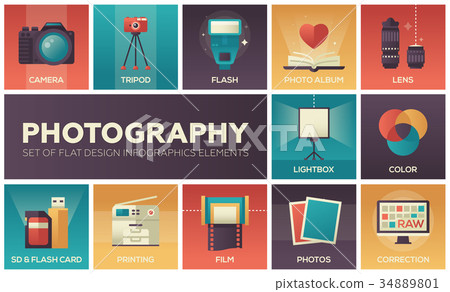Change Your Digital Photography By Understanding Illumination Strategies That Can Boost Your Photos-- Discover The Common Risks That Could Be Holding You Back
Change Your Digital Photography By Understanding Illumination Strategies That Can Boost Your Photos-- Discover The Common Risks That Could Be Holding You Back
Blog Article
Created By-Gillespie Fraser
As a photographer, you understand that lights can make or damage your photos. Recognizing the subtleties of both natural and artificial light is necessary for catching the state of mind and quality you go for in your work. Whether you're chasing after the excellent golden hour glow or fine-tuning your artificial configurations, understanding these components can boost your photography substantially. However there prevail risks that lots of forget, and identifying them can change your technique to every shoot. Let's explore what you may be missing out on and exactly how it can affect your results.
Understanding Natural Light
Understanding all-natural light is vital for any photographer looking to improve their job. It's the structure of great digital photography, affecting mood, tone, and clearness. When you shoot outdoors, take note of the moment of day. The gold hour-- quickly after dawn and prior to sunset-- provides soft, cozy light that can transform regular scenes right into sensational photos.
Do not ignore the power of overcast days. Cloud cover diffuses sunlight, producing a soft, also light that's perfect for pictures and macro photography. You'll locate colors appear this sort of lights without severe shadows.
Positioning matters, too. Always consider your subject's orientation to the light source. If the sunlight's behind your subject, you may wind up with a silhouette, which can be significant but mightn't be what you desire. Alternatively, direct sunlight can produce uncomplimentary shadows.
Trying out angles; often, transforming your point of view can produce amazing outcomes. Usage natural reflectors, like water or sand, to jump light onto your topic, adding dimension.
Mastering Artificial Light
Grasping artificial light is necessary for professional photographers who intend to take their skills to the next level. Whether you're making use of speedlights, studio strobes, or constant lights, comprehending how to adjust these sources can dramatically enhance your pictures.
Start by familiarizing on your own with the essentials of light quality, direction, and shade temperature. Try out various modifiers like softboxes, umbrellas, or grids to control the soft qualities or harshness of the light.
You'll locate that soft light frequently creates complementary results, while harsher light can add dramatization and depth. Do not avoid darkness; they can enhance the three-dimensionality of your topics.
Pay very close attention to the placement of your lights. A light positioned too close to your topic can develop unflattering outcomes, while as well far away can cause a lack of information. Make check over herea of a light meter or your camera's pie chart to ensure you're revealing correctly.
Lastly, bear in mind that man-made light can be combined with ambient light for imaginative effects. Stabilizing these sources may take practice, once you grasp it, your photography will genuinely radiate.
Strategies for Various Situations
When you step into various shooting situations, adjusting your lighting methods is essential for capturing the very best pictures. For exterior pictures, use the golden hour-- early morning or late afternoon light-- to soften darkness and boost complexion.
If it's a rough noontime sunlight, consider using a reflector to jump light back onto your subject or seek shaded areas for a much more even exposure.
In low-light situations, like interior events, enhance your ISO and use a vast aperture to let in more light. A tripod can aid eliminate camera shake, enabling longer direct exposures without blurring.
If you're shooting at evening, experiment with off-camera flash to develop dynamic lights and deepness in your pictures.
For item digital photography, make use of diffused illumination to prevent harsh representations. Softboxes or light camping tents can help accomplish this result.
When photographing landscapes, take into consideration the direction of light and time of day, as it can dramatically change the mood of your shot.
Always prepare to readjust Get the facts and placing based on the scenario, as flexibility is vital to understanding illumination in photography.
Conclusion
In conclusion, understanding illumination is crucial to boosting your photography abilities. Accept all-natural light's elegance throughout golden hour, and don't shy away from trying out synthetic light methods. By adjusting your strategy to various circumstances, you'll record stunning images that resonate with emotion and clearness. Remember, the appropriate illumination can transform a common shot into something phenomenal, so keep practicing and fine-tuning your understanding of both all-natural and fabricated light. Pleased capturing!
